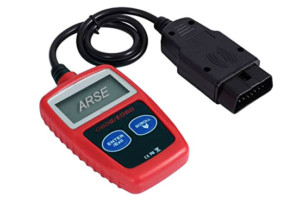 Porsche DTCs, Fault Codes or Trouble Codes – How to Make Sense and Take Advantage of those OBD2 Codes on Your Porsche.
Porsche DTCs, Fault Codes or Trouble Codes – How to Make Sense and Take Advantage of those OBD2 Codes on Your Porsche.
So, you’re working from home, bored and hooked on Amazon shopping. You decide it’s time to get one of those fancy new DTC OBD2 code readers and do a spot of that there mechanic stuff yourself – how difficult can it be? You plug in, read the code and there’s your answer – simple, right?
“This little thing will save us a fortune in repair bills, babe,” you proudly announce to your wife, as you rip open the box and head for the garage. Let’s see what that check engine light on the Porsche is really all about. You got this, no worries, right?
What Does That Check Engine Light Mean?
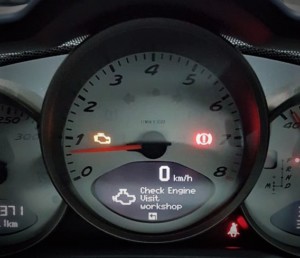 Your Porsche will identify and store trouble codes within a series of on-board control modules. On-Board-Diagnostic (OBD2) trouble codes are one of the ways to identify mechanical problems with the cars various systems.
Your Porsche will identify and store trouble codes within a series of on-board control modules. On-Board-Diagnostic (OBD2) trouble codes are one of the ways to identify mechanical problems with the cars various systems.
Most instances of mechanical trouble that trigger a fault code, will also set a warning light on the dashboard. However, there are a relatively small number of dash indicator lights and more than 5000 potential codes that could trigger them! There are of course, some mechanical systems that don’t have OBD monitoring. These unmonitored mechanical items partly form the reason why an annual physical inspection of your Porsche is so important.
Porsche, like every car built since 1996, has an OBD2 compliant fault output system. The goal of the OBD2 compliance is to map problems, which the cars onboard diagnostic system has identified, into a common, understandable fault definition that is used by multiple manufacturers to resolve an issue.
The problem here is that OBD compliance assumes all cars will have the same root cause for the codes that define a problem. What your Porsche identifies as a problem and how it subsequently maps that to a standard OBD code, might be completely different from another manufacturer. Indeed, that code interpretation might well be different between versions of the same control module in different models of various Porsche chassis.
 We’ve all seen the obvious examples of what happens when you try to convey meaning in Chinese converted to English!
We’ve all seen the obvious examples of what happens when you try to convey meaning in Chinese converted to English!
Porsche Diagnostic Trouble Codes Explained – Would I lie to You?
The same problem exists when the meaning of a mechanical problem is converted to standard OBD codes. Often the root cause of the problem is not as evident from the code as you would expect. This can cause the true meaning of the fault to be lost in the translation to a standard OBD2 code. Not nearly as funny as the vegetables!
For example, a simple fault code P0101 – defined as Mass Air Flow “A” Circuit Range/Performance. This sets a check engine light and likely has symptoms like rough running or poor engine performance. The code suggests the mass air flow sensor is the problem.
 So, you replace the mass air flow sensor, clear the fault and within one drive cycle, “bing”, there’s that same check engine light! Worse still, re-scanning the car gives you the same P0101 fault code – how can that be? Did the OBD system lie? Will you have to explain to your wife you’re not the expert Porsche mechanic you thought you were? Maybe it’s a bad new part?
So, you replace the mass air flow sensor, clear the fault and within one drive cycle, “bing”, there’s that same check engine light! Worse still, re-scanning the car gives you the same P0101 fault code – how can that be? Did the OBD system lie? Will you have to explain to your wife you’re not the expert Porsche mechanic you thought you were? Maybe it’s a bad new part?
Interpreting Porsche Diagnostic Trouble Codes – The Truth
Really good mechanics, like the ones found in our guide to Porsche repair shops, will tell you the fault codes reported by the OBD are simply an indication of a problem in a particular system and don’t necessarily identify the root cause.
What’s missing from the reported fault code is WHY! Does the code mean the component is faulty or does it suggest the component can’t operate within its normal range because something else is broken? In the P0101 example above, why is the engine management system reporting that the mass air flow sensor is out of range/performance?
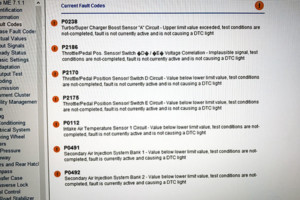 Yes, this could be caused by a defective mass air flow sensor, but it could also be a vacuum leak, a split intake air boot or PCV hose, a defective intake manifold gasket, wiring or connector problems etc. You might be lucky and replace the mass air flow sensor and solve the problem. On the other hand, you might spend $300 on a mass air flow sensor, only to discover the problem is actually caused by a spilt in a small inexpensive piece of rubber hose!
Yes, this could be caused by a defective mass air flow sensor, but it could also be a vacuum leak, a split intake air boot or PCV hose, a defective intake manifold gasket, wiring or connector problems etc. You might be lucky and replace the mass air flow sensor and solve the problem. On the other hand, you might spend $300 on a mass air flow sensor, only to discover the problem is actually caused by a spilt in a small inexpensive piece of rubber hose!
As the mass air flow sensor is an electronic component, it can be monitored by the OBD. The hoses, gaskets, seals and connectors in the air intake system have no electrical connection, so they can’t be monitored by ODB. A problem caused by a leaking air hose for example, can only be reported by the closest monitored electronic device (the mass air flow sensor). The mass air flow sensor detects a system performance problem outside of its normal operating range and reports that fault to the engine control module or DME – voilà, check engine light and code P0101.
How to Make Sense of Porsche OBD2 DTCs – Fault Codes
The best way to make sense of any fault code that comes from the OBD systems on your Porsche, is to treat them simply as a reflection of the current status of the reported system and not necessarily a faulty component. The OBD DTC lets you know that the system is not within its normal operating parameters – now, what you have to do is find out why.
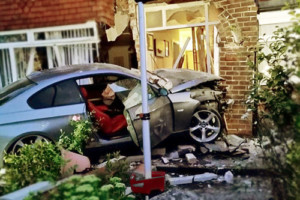
Honey, I’m home!
This is rather like stumbling in to the house late on a Friday night and having your wife annoyingly state the obvious, “you’re drunk.” That’s the OBD DTC code. It’s a status – yes, she’s right you are drunk. Why you got drunk after work before you went home on a Friday night, is what has caused the “you’re drunk” fault code to appear.
Using the OBD DTCs to your advantage requires understanding how the faulty system could have got into the state that is now being reported through the codes. It means going through the vehicle system and understanding what could influence a status to be reported as faulty. Of course, that means understanding why you got drunk after work on a Friday night – probably best if we deal with that particular problem in a different article though!
Layout and Format of the OBD2 Trouble Codes
Each trouble code generally consists of one letter and four digits, such as P1234. The codes prefixed with a “P” are the most commonly discussed. However, OBD2 trouble codes are categorized into four different vehicle systems by using the prefix identifying letter:
- B prefixed codes – Body – (B0XXX) This category covers functions that are commonly inside of the passenger compartment. These vehicle systems are associated with assistance, comfort, convenience, and safety of the driver and passengers.
- C prefixed codes – Chassis – (C0XXX) This category covers vehicle systems that are commonly involved in dynamics control such as brakes, steering and suspension etc.
- P prefixed codes – Powertrain – (P0XXX, P2XXX, P34XX) This category covers vehicle systems that include engine, transmission and associated drivetrain components
- U prefixed codes – Network & Vehicle Integration – (U0XXX, U2XXX, U3XXX) This category covers vehicle systems that work together and share information through various modules.
Generic and Porsche Specific Codes
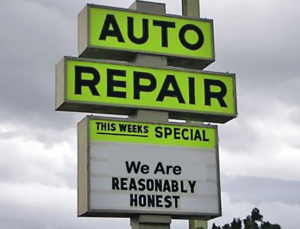 The first digit in the code tells you if the code is a generic or Porsche specific code.
The first digit in the code tells you if the code is a generic or Porsche specific code.
Codes that start with 0 are generic or global codes that are reflected on all OBD2 compliant cars. Codes that start with a 1 are manufacturer specific or enhanced codes. This means these particular codes or at least their definitions, are unique to a specific Porsche or model range.
The first digit of a code may also be a 2 or 3. In this case, the type of code depends on the system reporting the fault. B2xxx and C2xxx codes are controlled by the manufacturer for proprietary systems. P2xxx codes are generic or global codes, while P3xxx codes are again, manufacturer specific. Finally, U2xxx and U3xxx codes are manufacturer specific for networked systems.
Clear? Don’t worry, there are plenty of “also ran” mechanics that don’t understand this as well. That’s why it’s so important to employ the services of a specialist mechanic.
How Do You Feel About That DTC Code Reader Now?
 There are lots of resources online for looking up the definition of a code. For the DIY Porsche mechanic, making good use of these codes, requires a deeper understanding than simply reading the standard code definition. Being able to understand what fault the car is communicating is helpful, but all too often, the codes provide only half of the story. A code reader can be useful when shopping for a used Porsche.
There are lots of resources online for looking up the definition of a code. For the DIY Porsche mechanic, making good use of these codes, requires a deeper understanding than simply reading the standard code definition. Being able to understand what fault the car is communicating is helpful, but all too often, the codes provide only half of the story. A code reader can be useful when shopping for a used Porsche.
Don’t erase the faults until you have resolved the problem. It’s very tempting to hit that “clear faults” button, but doing so can reset a selection of systems and erase historical information. This can make the task of identifying the root cause of a problem that much more difficult.
As the cars get more complex, a solid understanding of the system reporting the fault is required before tackling any repair. We strongly recommend you seek the help of a local Porsche repair shop or reach out to us and we’ll recommend what we believe is your next best course of action.